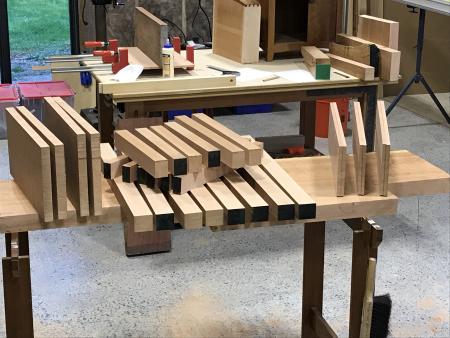Different furniture makers apply different methods when they design new pieces. Some turn to pencil and paper; others draft a design using computer software. One is not better than the other. In either case the process itself helps the designer make creative decisions about the piece and work towards a final resolution of the initial idea. The drawings, analog and digital, are a bridge from the mental image to a concrete set of steps.
Custom Work
It starts with a drawing

A board can tell a story
It is a long way from the cherry plank shown here to a finished cabinet. And a long way from the grove or forest where this tree was felled. Thanks to a thriving industry of woodworking, boat building, and home construction, the Pacific Northwest has a rich supply of materials to choose from. The biggest challenge for us in this process is moving boards like this into our shops.

A wide array of choices
The first construction step is to mill the various components: legs, rails, stiles, panels. This is not as straightforward as it might seem. When making fine furniture it is important to map out your cuts. There are imperfections in the wood that need to be avoided. Splits in the grain to work around. Sections along the edge or in the center that might detract visually. Some planks yield a surprisingly small amount of useful material. Others provide more than enough. It is at this stage, when you feel you have really started, that extra care is taken to get it right.

Details matter
Of course the distinguishing feature of fine wood furniture is the attention to detail. It is one thing to get the design right, another to build it. Every joint is inspected. Every mortise is carefully prepared. Every surface is planed and sanded smooth.

